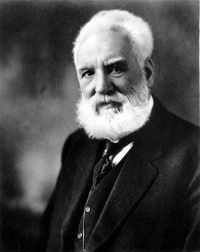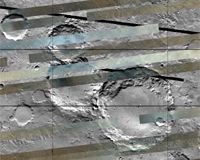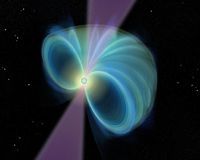Jerry Brown and Rinaldo Brutoco and James Cusumano
OdeMagazineFri, 28 Dec 2007 06:00 UTC
Hydrogen fuel cells will never be a practical source of power, right? Wrong. The technology is set to take off sooner than you think.
You may think hydrogen power is some futuristic fantasy, fit only for science-fiction writers. Or, at best, you might consider it a promising technology that won't be ready for prime time for another 40 to 50 years. If so, think again. In a special edition on "Best Inventions 2006," Time magazine praises the decision by Shanghai-based Horizon Fuel Cell Technologies "to design and market the H-racer, a 6-inch-long toy car that does what Detroit still can't. It runs on hydrogen extracted from plain tap water, using the solar-powered hydrogen station."
A team of biologists have developed a model mapping the control circuit governing a whole free living organism. This is an important milestone for the new field of systems biology and will allow the researchers to model how the organism adapts over time in response to its environment. This study marks the first time researchers have accurately predicted a cell's dynamics at the genome scale (for most of the thousands of components in the cell).
Brian Bergstein
PhysOrgThu, 27 Dec 2007 14:54 UTC

|
| ©(AP File Photo)
|
| This is an undated file photograph of Alexander Graham Bell, inventor of the telephone. A new book claims to have definitive evidence of a long-suspected technological crime -- that Alexander Graham Bell stole ideas for the telephone from a rival, Elisha Gray.
|
In '
The Telephone Gambit: Chasing Alexander Graham Bell's Secret', journalist Seth Shulman argues that Bell - aided by aggressive lawyers and a corrupt patent examiner - got an improper peek at patent documents Gray had filed, and that Bell was erroneously credited with filing first.

|
| ©Earle M. Holland, courtesy of Ohio State University.
|
| Long Term Ecological Research Network site in Taylor Valley , one of the McMurdo Dry Valleys in Antarctica .
|
Scientists have gathered more evidence that suggests flowing water on Mars -- by comparing images of the red planet to an otherworldly landscape on Earth. In recent years, scientists have examined images of several sites on Mars where water appears to have flowed to the surface and left behind a trail of sediment. Those sites closely resemble places where water flows today in the McMurdo Dry Valleys in Antarctica, the new study has found.

|
| ©NASA/JPL/JHUAPL/Applied Coherent Technology
|
Scientists are getting a clearer image of mineral distribution on the surface of Mars, thanks to the Compact Reconnaissance Imaging Spectrometer for Mars (CRISM), one of six science instruments on NASA's Mars Reconnaissance Orbiter, currently circling the planet. More than 200 just-released "spectral maps" reveal the distribution of various minerals on the surface of Mars -- the first installment of the Global Mars Map, which will eventually cover the entire planet.

|
| ©Russel Kightly Media
|
| An artist's impression of a Rotating Radio Transient.
|
XMM-Newton has detected periodic X-ray emission, or the pulsed heartbeat of a weird new type of star. Collecting the X-rays from the so-called rotating radio transient has confirmed the nature of the underlying celestial object and given astronomers a new insight into these exotic objects. The observations were made using XMM-Newton's European Photon Imaging Camera (EPIC), which targeted the celestial object RRAT J1819-1458. Astronomers observed the object for around 12 hours and detected pulsations in the X-ray data that show the source to be rotating once every 4.26 seconds.
VLT's NACO instrument reveals a triple cosmic collision
Using ESO's Very Large Telescope, an international team of astronomers has discovered a stunning rare case of a triple merger of galaxies. This system, which astronomers have dubbed 'The Bird' - albeit it also bears resemblance with a cosmic Tinker Bell - is composed of two massive spiral galaxies and a third irregular galaxy.
There could be enough computing ability in just one brain cell to allow humans and animals to feel, a study suggests.
Researchers in Israel say they have succeeded in putting a version of the Bible on a chip smaller than a pinhead.
Its 300,000 words in Hebrew were inscribed on a silicon surface at the Haifa Institute of Technology.
Scientists say the aim of the project is to increase young people's interest in nanoscience and nanotechnology.
Mark Kidger of the European Space Agency confesses to a certain obsession at this time of year -- one that has nothing to do with the big bang or dark energy.
"It's probably the oldest mystery in astronomy," the British scientist said.
Kidger is speaking of the "Star of Bethlehem," the heavenly sign in the Gospel of St. Matthew that guided the wise men in their search for the baby Jesus.


